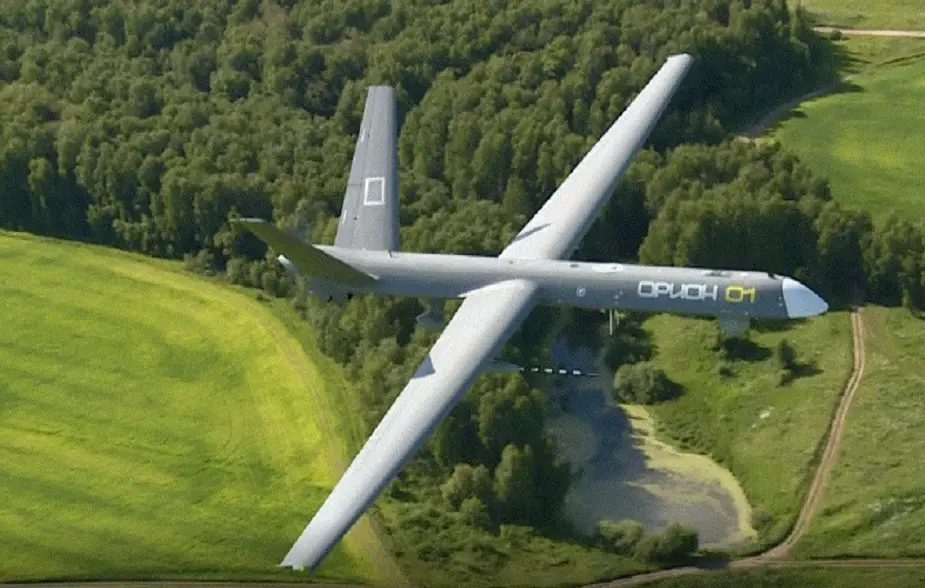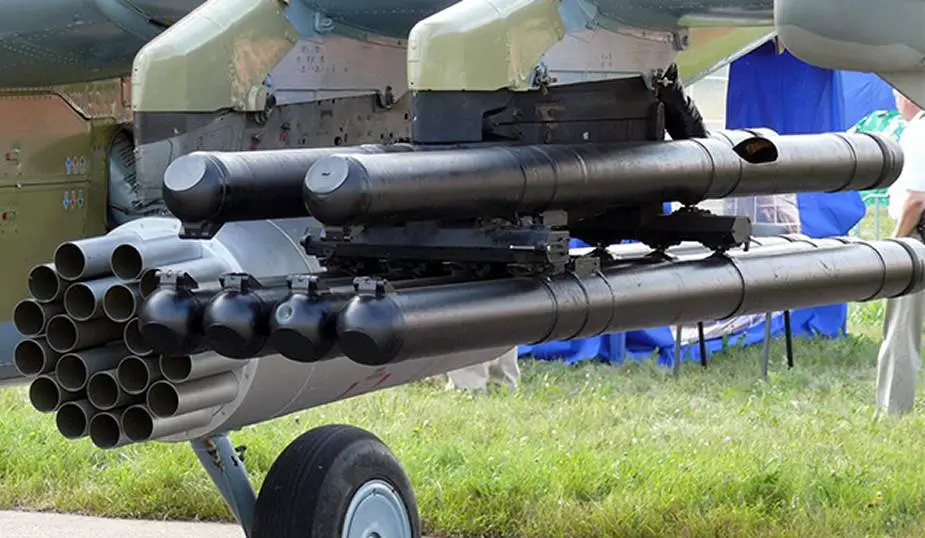Kronshtadt Company plans to test Orion (Inokhodets R&D) strike drone with antitank Vikhr-M missile by the end of the year, CEO Sergey Bogatikov told TASS.
Follow Air Recognition on Google News at this link

Orion MALE UAV (Picture source: KT Group)
“We have to test our drone with Vikhr-M missiles in the end of the year,” he said.
The integration of the missile is in full swing and will be completed by the end of the year.
In February, Bogatikov reported to Defense Minister Sergey Shoigu that Kronshtadt would supply at least six Inokhodets strike drones in 2021.
Kronshtadt is engaged in a full cycle of drone creation from the design to tests and certification. Since its foundation in 1991, the enterprise has been specializing in the design of onboard, ground and sea systems, simulators and interactive complexes.
About Orion UAV
Orion has a normal aerodynamic scheme with a 16-meter wing in the middle and V-shaped tail fins. Maximum takeoff weight is 1200 kg. The drone and mechanisms are made of carbon plastic composite materials to decrease the glider weight. Vacuum infusion technology was introduced. The drone has an electric impulse anti-icing system for operation in low temperatures.
A piston engine is in the tail to rotate and push a two-blade propeller. APD-115T engine was designed by Itlan Company and is likely an analogue of the Austrian Rotax 914 of 115 HP used in various drones, including US heavy Predator.
AV-115 adjustable pitch propeller was designed by the Russian Aerosila Company. It is the first in the family of highly effective drone propellers.
Orion can fly 24 hours at altitudes of 7500 meters. Its communication system was designed by Luch Bureau in Rybinsk. The range is 250 km. The drone takes off and lands automatically as an airplane with three retractable wheels.
It can carry a 200-kg payload, including the multichannel MOES stabilized electronic monitoring system. It was designed by Precision Instrument-Manufacturing System Corporation to detect and track targets day and night and provide guidance for weapons.
The drone can carry a radar or a photo survey unit, as well as reconnaissance and electronic warfare means. The equipment is accommodated in a compartment under the central fuselage.

Four 9K121 Vikhr antitank missiles on helicopter (Picture source: Ministry of Industry and Trade of Russia)
About Vikhr-M missiles
The 9K121 Vikhr (Whirlwind; NATO reporting name: AT-16 Scallion) is a laser-guided anti-tank missile. "9K121" is the GRAU designation for the missile system. The missile can be launched from warships, Ka-50 and Ka-52 helicopters, and Su-25T aircraft. It was first shown publicly at the 1992 Farnborough Airshow. The Vikhr-1 missile is part of the Vikhr-M system, which also includes an automatic sight and a depressible launcher. Adopted in 1990. The missile was upgraded in 2021.
The missile is designed to engage vital ground targets, including armoured targets fitted out with built-in and add-on explosive reactive armor, at a range of up to 8 km when fired from a helicopter and 10 km when fired from a fixed-wing aircraft in daytime and up to 5 km at night, as well as air targets in conditions of air defense assets activity.
© Copyright 2021 TASS. All rights reserved. This material may not be published, broadcast, rewritten or redistributed.
















